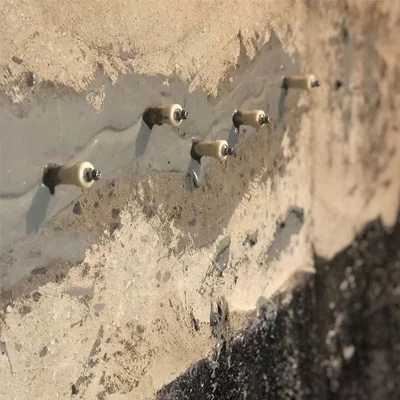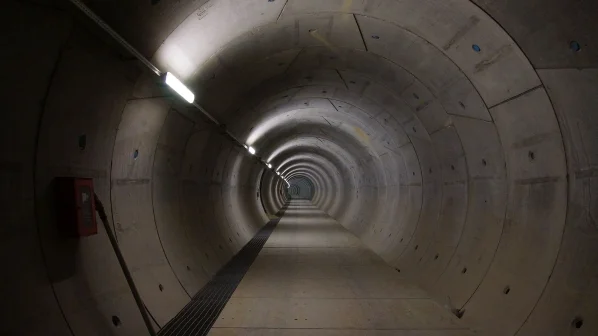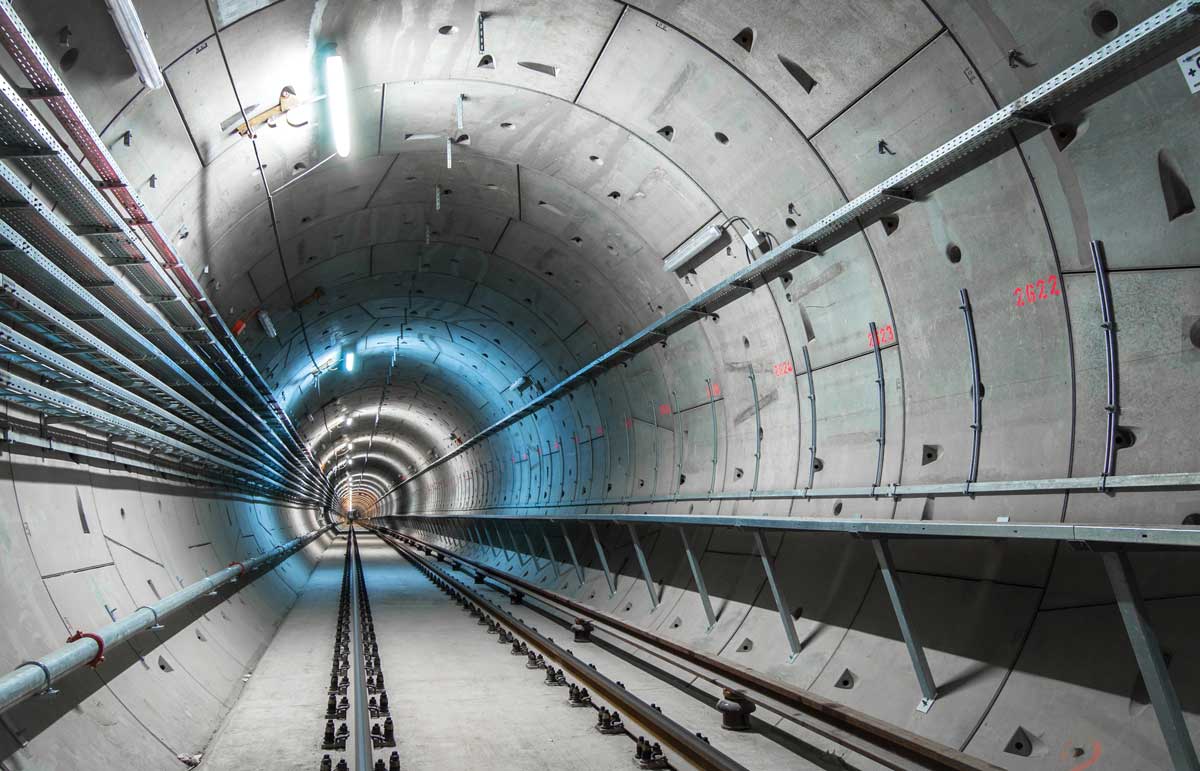
Polyurethane Injection in Mining and Tunneling
Grouting in Mines and Tunnels: Management of Water Ingress and Ground Conditions
Unexpected water ingress and poor ground conditions encountered during mining and tunneling operations can pose serious problems for underground contractors. These challenges can cause water ingress through gaps and cracks underground, which can damage infrastructure, posing safety risks and requiring costly repairs.

Problems of Underground Water Intake
Water ingress can cause various problems in mining and tunneling projects:
- Infrastructure Damage: Water can widen cracks and voids in underground structures, causing damage to infrastructure.
- Safety Risks: Water leaks can jeopardize worker safety and create emergencies.
- Equipment and Product Damage: Damage to mining equipment and products can disrupt projects and reduce productivity.
- Costly Consequences: Water intrusion can lead to additional repair and remediation costs, which can strain a project’s budget.
Managing Water Ingress with Injection Technologies
Polyurethane and acrylic resin injections are the most important methods used to effectively manage water ingress in mining and tunneling projects:
- Polyurethane Resins: Expands and foams on contact with water, filling gaps and cracks underground and providing a temporary seal. This immediately stops water ingress and sets the stage for more permanent solutions.
- Acrylic Resins: With their low viscosity and hydrophilic properties, they provide a permanent seal by forming an elastic and durable gel. Once cured, it permanently seals cracks, gaps and joints.
Injection technologies control water seepage in underground projects, helping to protect infrastructure, improve safety and reduce costs.
Challenges and Solutions in Tunnel Waterproofing
Tunnel waterproofing is one of the most complex and demanding processes of engineering projects. In order to improve the waterproofing of an existing tunnel or to ensure the watertightness of a newly constructed tunnel, it is crucial to apply the right methods and select the appropriate products.
Why Do Tunnels Leak?
When water seepage occurs in a tunnel, it can damage the structural integrity of the tunnel over time. Water seepage can interrupt the tunnel’s main activities, require costly repairs and even lead to serious safety risks.
The best way to prevent water seepage in tunnel projects is through thorough planning and design. However, remediation of existing tunnels is a more complex process than new construction. The following are the main factors that can cause water seepage in tunnels:
- Incorrect design calculations or unforeseen loads
- Insufficient evaluation of tensile loads
- Incorrect steel placement
- Inadequate concrete pavement
- Concrete shrinkage and excessive heat generation
- Reinforcement corrosion
- Inadequate care and attention
These factors are among the most common causes of water leakage in tunnels and should be taken into account to avoid such problems.

Tunnel Waterproofing Methods
The two main methods commonly used for tunnel waterproofing are the injection of polyurethane and acrylic resins into the tunnel substrate via injection packers. These resins penetrate into the voids, expand and form a completely watertight structure. Both resin types offer superior water protection and can be used effectively in different tunnel waterproofing scenarios.
The advantages of polyurethane resin include the fact that it expands and foams on contact with water, filling gaps, cracks and cavities in the structure. This is ideal for providing a temporary seal, especially in tunnels and underground structures with high water ingress. The temporary seal made with polyurethane resin can then be made permanent with acrylic injection resin.
Acrylic resins are characterized by their low viscosity and hydrophilic structure. These resins react to form an elastic and durable gel. The reaction time can be varied by adjusting the proportions of the components and once cured, they permanently seal cracks, gaps and joints in tunnels.
Polyurethane and acrylic injection resins can also be applied in construction joints using injection hoses.
- Used Areas
- Advantages
- Product Table
- Videos
- Gallery
- Articles
Other Application Areas of Tunnel Waterproofing
Injection resins provide effective waterproofing not only in tunnels but also in other structures and projects such as;
- Basements
- Bridges
- Underground parking lots
- Construction sites
- Water treatment plants
- Public and private buildings

Advantages of Injection
- Fast Response: Polyurethane and acrylic injections stop water leakage instantly when applied quickly.
- Long Lasting Protection: Acrylic resins offer long-lasting protection by providing a permanent seal.
- Equipment Protection: Preventing water ingress protects mining equipment and products.
- Cost Effectiveness: Injection methods reduce repair costs and ensure project continuity.

Our products used in mining application are as followed:
Choosing the right product according to the application area is crucial, especially in coal mines. Coal catches fire at over 120oC. Therefore, the reaction heat of the products to be used is very important. At this point, phenolic, silicate and polyurethane injection types are used.
| Product | Viscosity (cP, 23ºC) | Mixing Rate | Structure | Starting of Reaction | Ending of Reaction | TDS |
|---|---|---|---|---|---|---|
| PURINSEAL EN 101 | 550 | 10% Catalyst | Forms a very flexible, closed-cell foam when in contact with water. | 10 sec | 100 sec | |
| PURINSEAL EN 105 | 400 | 10% Catalyst | Forms a very flexible, closed-cell foam when in contact with water. | 10 sec | 100 sec | |
| PURINSEAL EN 106 | 400 | 5% Catalyst | Forms a very flexible, closed-cell foam when in contact with water. | 10 sec | 70 sec | |
| PURINSEAL EN 112 | <100 | 5% Catalyst | Forms a semi-rigid foam when in contact with water. | 10 sec | 135 sec | |
| PURINSEAL EN 113 | 100 | 10% Catalyst | Forms a flexible, closed-cell foam when in contact with water. | 10 sec | 90 sec | |
| PURINSEAL EN 114 | 120 | 1% Catalyst | Forms a semi-rigid foam when in contact with water. | 10 sec | 120 sec | |
| PURINSEAL EN 115 | 200 | 5% Catalyst | Forms a semi-rigid foam when in contact with water. | 5 sec | 75 sec | |
| PURINSEAL EN 116 | 200 | 5% Catalyst | Forms a semi-rigid foam when in contact with water. | 18 sec | 95 sec | |
| PURINSEAL EN 301 | 150 | Without Catalyst | Forms a semi-rigid foam when in contact with water. | 20 sec | 140 sec | |
| PURINSEAL EN 401 | 250 | 1:1 | Forms a water-tight, flexible elastomeric gasket (70 shore A) | Pot Life: 40 min | Pot Life: 40 min | |
| PURINSEAL EN 402 | 400 | 1:1 | Forms a water-tight, rigid elastomeric gasket (70 shore D) | 20 sec | 40 sec | |
| PURINSEAL EN 403 | 300 | 1:1 | Forms a rigid foam in anhydrous environment | 10 sec | 80 sec | |
| PURINSEAL EN 404 | 350 | 1:1 | Forms rigid foam when in contact with water and forms a rigid elastomeric gasket in anhydrous environment. | 20 sec | 140 sec | |
| PURINSEAL EN404s | 350 | 1:1 | Forms rigid foam when in contact with water and forms a rigid elastomeric gasket in anhydrous environment. | 50 sec | 500 sec | |
| PURINSEAL EN 405 | 325 | 1:1 | Forms rigid foam in anhydrous environment, expands x1 of its volume (70 shore D) | 40 sec | 120 sec | |
| PURINSEAL EN 406 | 580 | 1:1 | Forms flex foam when in contact with water and forms a flex elastomeric gasket in anhydrous environment. | 5 sec | 230 sec | |
| PURINSEAL EN 450 | 200 | 1:1 | Forms a very flexible, closed-cell foam, foaming reaction only takes place in direct contact with water | 15 sec | 80 sec |
EN 101
EN 105
EN 106
EN 112
EN 113
EN 114
EN 115
EN 116
EN 301
EN 401
EN 402
EN 403
EN 404
EN 404s
EN 405
EN 406
EN 450


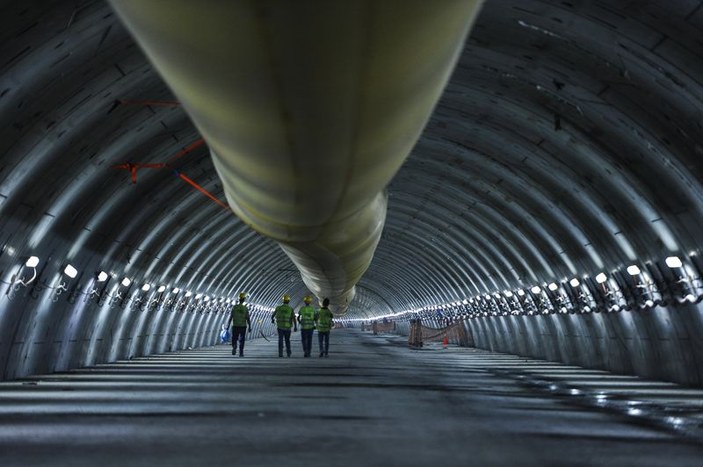

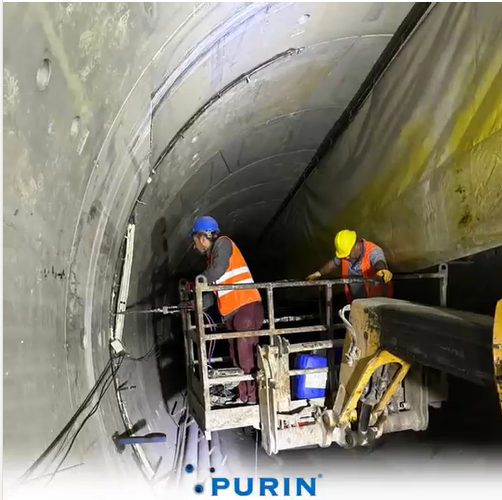
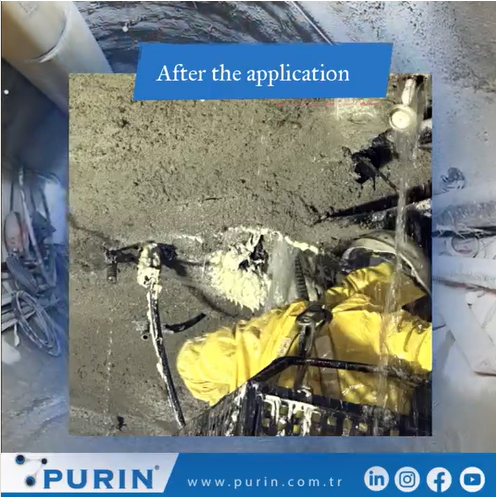
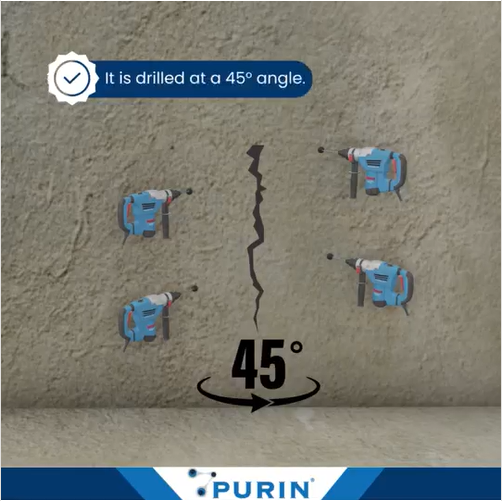
Add your content here…


